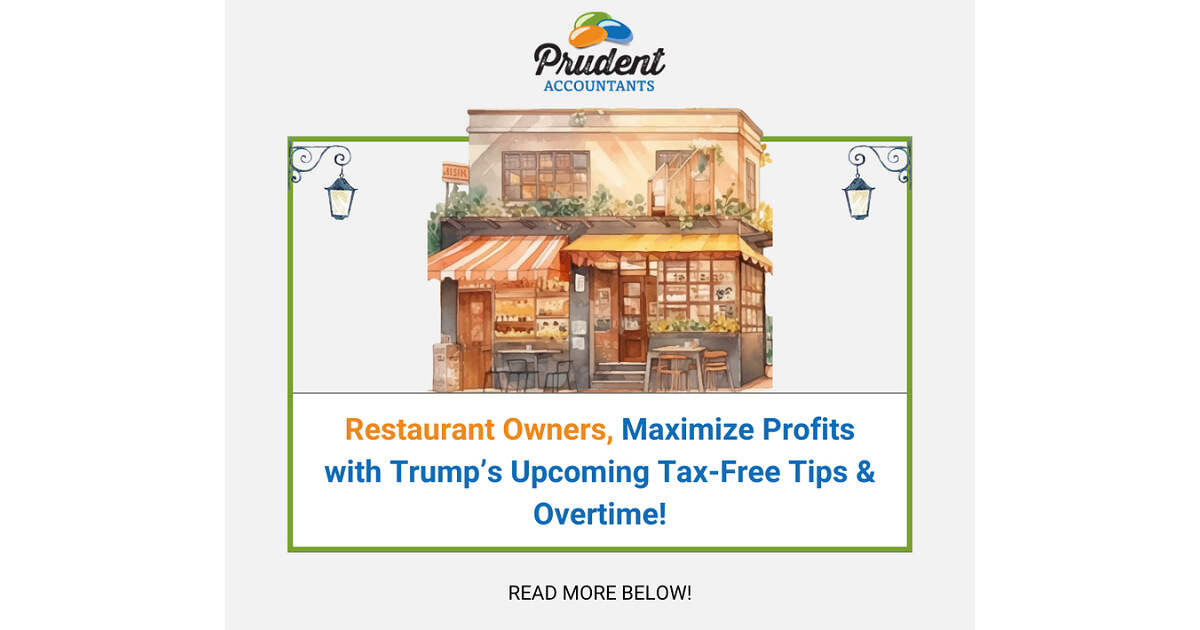New Tips and Overtime Rules? How Restaurant Owners Can Thrive with Trump’s Tax-Free Proposal

With states rolling out new rules on tipping and overtime, restaurant owners are bracing for big changes. On top of that, Trump’s recent proposal to make tips and overtime tax-free is creating new opportunities—and questions—for the food and service industry. If you’re wondering how to adjust your pay structures and keep employees satisfied without breaking the bank, here’s what you need to know to stay ahead of the curve.
1. What’s Changing? Understanding State and Federal Proposals on Tips and Overtime
As various states aim to boost wages for restaurant employees, they’re looking to implement:
- Higher Base Wages for Tipped Workers: Many states are moving to reduce reliance on tips by increasing minimum pay for tipped staff, which means employers will need to pay more directly, rather than relying solely on tips.
- Expanded Overtime Eligibility: Certain state-level proposals are broadening overtime eligibility, requiring time-and-a-half pay for longer shifts. This could mean more staff members are eligible for overtime, creating potential cost increases.
Meanwhile, Trump’s federal proposal to make tips and overtime tax-free presents a unique twist: employees could keep a larger portion of their earnings, even if state rules lead to higher base wages and more overtime pay.
2. Trump’s Tax-Free Tips and Overtime: What It Means for Restaurants
Trump’s proposal could bring key advantages for both employees and business owners:
- Higher Take-Home Pay: By eliminating federal taxes on tips and overtime, employees take home more income, which could improve job satisfaction and retention without requiring owners to raise base wages as significantly.
- Flexibility in Pay Models: With tax-free earnings on tips and overtime, restaurant owners can design more flexible pay structures. For example, tip pooling policies can be implemented without affecting employees’ tax liabilities.
This means restaurant owners could balance new state-level requirements with federal tax benefits to create an attractive, fair pay system that still aligns with their budget.
3. Smart Steps for Restaurant Owners to Prepare
To manage the impact of these changes effectively, here are some strategies to consider:
1. Evaluate and Adjust Your Pay Structures
- Consider New Tip Models: With tax-free tips, you might want to implement tip pooling or even explore service charges that distribute earnings more evenly among all employees. This could also help offset any additional costs from state-mandated base wage increases.
- Optimize Base Pay with Overtime Considerations: If certain employees become eligible for overtime, plan ahead by offering competitive base pay while using Trump’s tax-free overtime proposal to increase employee earnings when shifts go over 40 hours.
2. Strategize Scheduling and Staffing
- Reduce Overtime Costs: With more employees potentially eligible for overtime, smarter scheduling is key. Monitor hours carefully to avoid unnecessary overtime expenses while still providing high-quality service.
- Mix Part-Time and Full-Time Workers: Balancing part-time and full-time staff can help you control labor costs and provide scheduling flexibility. Seasonal or part-time staff can assist during peak hours, keeping you within budget.
3. Boost Employee Satisfaction with Tax-Free Tips and Overtime
- Emphasize the Benefits of Tax-Free Earnings: Make sure your employees know they get to keep more of their hard-earned tips and overtime pay thanks to the federal tax break. This can boost morale and make your restaurant a more appealing place to work.
- Reward Performance with Extra Hours: Offer overtime shifts as a perk to dedicated employees. If tips and overtime are tax-free, this extra income can provide a strong incentive for those willing to work during busy periods.
4. Reassess Pricing to Balance Costs
- Consider Adjusting Menu Prices: If increased payroll costs from state laws affect your bottom line, you may need to slightly raise menu prices. Be transparent with customers, explaining how fair pay practices for staff contribute to a positive dining experience.
4. Impact on the Restaurant Industry: Opportunities and Challenges
For Business Owners:
- Flexibility with Federal Tax Benefits: Trump’s tax-free proposal for tips and overtime gives restaurant owners more room to explore pay models without additional tax strain on employees. Paired with state-mandated changes, this flexibility could lead to new strategies for paying and retaining staff.
- Higher Labor Costs from State Requirements: While Trump’s proposal helps with tax breaks, rising state-mandated wages and expanded overtime eligibility still add to payroll costs. Owners will need to balance these state requirements with federal advantages to remain profitable.
For Employees:
- More Consistent and Higher Take-Home Pay: State proposals for increased base wages provide more income stability, while Trump’s tax-free proposal means employees get to keep more of their tips and overtime pay, benefiting their overall financial health.
- More Overtime Opportunities: With expanded overtime eligibility, employees can take advantage of tax-free extra hours, earning more without the tax burden on those extra earnings.
In Conclusion: Preparing Your Restaurant for a New Pay Landscape
For restaurant owners, the combination of state and federal proposals brings a mix of challenges and opportunities. By rethinking pay structures, managing schedules efficiently, and communicating the tax-free benefits to employees, you can adapt to these changes while keeping costs manageable. Embracing these adjustments can not only help your restaurant remain compliant but also create a business model that supports your staff and enhances the customer experience.








